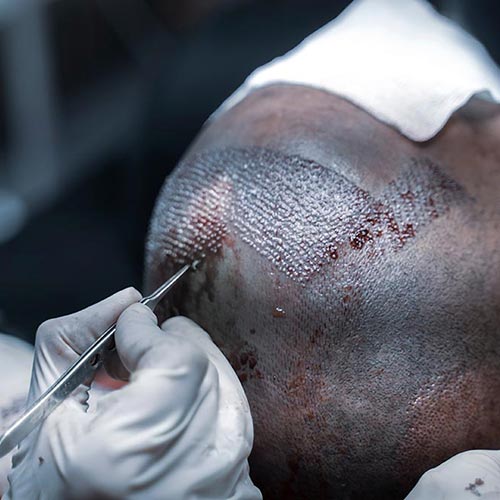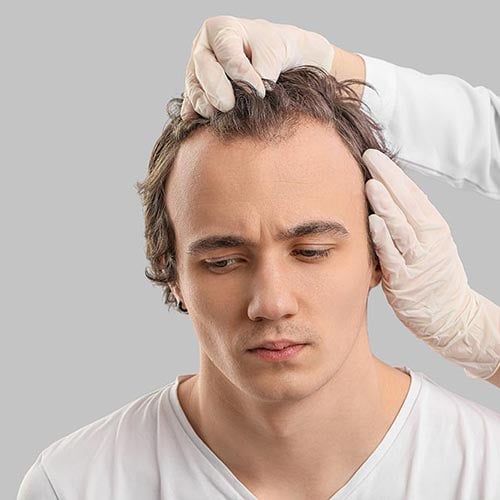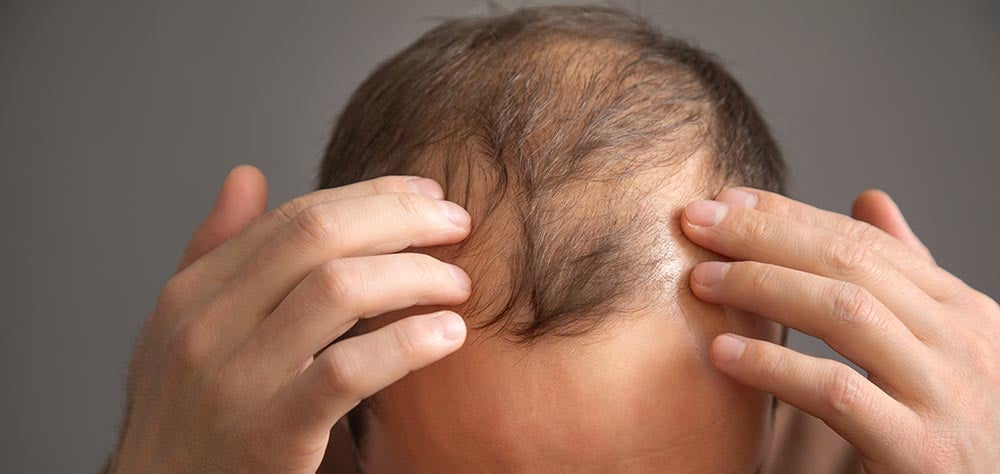Can Hair Transplantation Be Done in Summer?
It is possible to undergo a hair transplant in the summer, but certain precautions should be taken due to the effects of hot weather on the healing process. With proper protection against sun exposure and sweating, hair transplantation can be successfully performed during the summer months. Following expert recommendations and maintaining a regular care routine can make the post-transplant process easier. During the intense sunlight of summer, it is crucial to pay extra attention to aftercare for optimal results.


İÇİNDEKİLER
What Are the Disadvantages of Getting a Hair Transplant in Summer?
Undergoing a hair transplant in summer may have some disadvantages. Hot weather and sweating can increase the risk of scalp infections. Additionally, excessive exposure to intense sunlight may negatively affect the healing process. However, with proper aftercare and sun protection measures, these disadvantages can be minimized. The potential challenges of summer hair transplantation can be managed effectively with expert guidance.

Effects of Hot Weather on Post-Transplant Healing
High temperatures can make the healing process more challenging. Sweating may lead to infections in the transplanted hair follicles, making hygiene even more critical during recovery. Getting a hair transplant in summer requires staying in cool environments and avoiding strenuous activities to reduce excessive sweating.
Increased Risk of Sweating and Infection
Sweating during summer months can heighten the risk of infection in the hair follicles. Maintaining a clean scalp and adhering to regular washing routines are essential to prevent complications. The disadvantages of summer hair transplantation can be minimized by taking appropriate measures against excessive sweating.
Harmful Effects of Sun Exposure on the Scalp
Direct exposure to the sun can cause scalp irritation and prolong the healing process. To protect the scalp from UV rays, wearing a hat or using sun-protective products is necessary. Getting a hair transplant in summer can be a more comfortable experience when these precautions are taken.
What Should People Who Get a Hair Transplant in Summer Pay Attention To?
sun and maintain proper hygiene during the healing process. Additionally, using suitable accessories to prevent sweating and protect hair follicles is recommended. Following the doctor’s prescribed aftercare routine is essential for a successful recovery.
Using Sun Protection After a Hair Transplant in Summer
To shield the scalp from harmful sun exposure, it is important to regularly apply SPF-containing protective products. Since the transplanted areas are highly sensitive, direct sunlight should be avoided. Getting a hair transplant in summer can be made safer with proper sun protection.
Methods to Keep the Scalp Cool in Hot Weather
Staying in cool environments and wearing light, breathable hats are effective ways to protect the scalp from excessive heat. Preventing the scalp from overheating is crucial for maintaining healthy hair follicles. Healing after a summer hair transplant can be accelerated in a cooler environment.
Limiting Physical Activity to Reduce Sweating
Avoiding intense physical activities is necessary to prevent excessive sweating and protect the newly transplanted hair follicles. Light exercises, such as gentle walks, are preferable to minimize sweat production. Managing activity levels is one of the key precautions for those getting a hair transplant in summer.
How Should the Post-Transplant Care Routine Be in Summer?
Proper aftercare during the summer months is essential to accelerate the healing process after a hair transplant. The scalp should be regularly cleaned, moisturized, and protected from the sun. Additionally, using the special shampoos and lotions recommended by the doctor can aid recovery. Getting a hair transplant in summer becomes easier with the right care routine.
Using a Hat or Cap for Sun Protection
After a hair transplant, it is recommended to wear a breathable hat or cap to protect the scalp from sun exposure. These accessories shield the hair follicles from the harmful effects of UV rays. Undergoing a hair transplant in summer is more comfortable with the right choice of protective accessories.
Consult Now!
Fill out the form to get detailed information about the hair
transplant process and personalized solutions tailored for you!
Moisturizing the Scalp After a Summer Hair Transplant
Hot weather and low humidity levels in summer can cause scalp dryness, which may negatively affect the healing process of hair follicles. Regularly applying a moisturizer helps keep the scalp hydrated and speeds up recovery. A summer hair transplant should be supported with moisturizing products.
The Importance of Frequent Washing and Hygiene
Keeping the scalp clean after a hair transplant is crucial to prevent infections. Frequent washing in summer helps remove sweat and dirt buildup, keeping the transplanted follicles healthy. The disadvantages of getting a hair transplant in summer can be managed effectively through a strict hygiene routine.
What Are the Advantages of Getting a Hair Transplant in Summer?
Undergoing a hair transplant in summer can be advantageous due to the relaxation and time management benefits that come with holiday periods. Extended vacations make it easier to focus on the recovery process. Additionally, warmer weather improves blood circulation, which may help nourish the transplanted hair follicles more effectively. With proper care and precautions, summer hair transplantation can yield successful results.
More Time for Recovery During Holiday Periods
Holiday seasons provide an ideal opportunity to focus on post-transplant recovery. Being free from work commitments allows for better scalp protection and a more consistent aftercare routine. Getting a hair transplant in summer offers flexibility and comfort during the healing process.
Opportunities for Relaxation to Reduce Post-Transplant Stress
Summer vacations can help manage stress after a hair transplant. Spending time by the sea or in a natural environment supports the healing process of hair follicles. Undergoing a hair transplant in summer provides both physical and mental relaxation, making the recovery phase more manageable.
Faster Visibility of Hair Transplant Results in Summer
When a hair transplant is performed in summer, the grafts tend to settle and grow more quickly. This is due to increased blood circulation and the ability to maintain a consistent aftercare routine. Getting a hair transplant in summer may allow patients to notice results in a shorter period.
What Is the Ideal Timing for a Hair Transplant in Summer?
Timing is crucial for those considering a hair transplant during the summer months. It is best to avoid periods of intense sun exposure and be mindful of factors such as swimming in the sea or pools. Getting a hair transplant in summer can be made easier with proper timing and necessary precautions. Choosing periods when sun exposure is less intense is advisable.
Benefits of Getting a Hair Transplant at the Beginning or End of Summer
The early and late summer months are the most suitable periods for a hair transplant. During these times, temperatures are lower, and sun intensity is reduced. Those undergoing a hair transplant in summer should take advantage of these periods to focus more on the healing process.
Recommended Timeframes for Avoiding the Sea and Pools
Seawater and pool chemicals can negatively affect the healing process after a hair transplant. Since the newly transplanted follicles are highly sensitive, it is recommended to avoid swimming for at least 15–20 days. The disadvantages of getting a hair transplant in summer can be minimized by following these precautions.
Choosing Times with Less Intense Sun Exposure
The sun’s intensity is lower during early morning and late afternoon hours, making these the best times to be outdoors. During a summer hair transplant recovery, avoiding peak sunlight hours can make the healing process more comfortable and effective.
Lifestyle Adjustments After a Hair Transplant in Summer
Paying attention to lifestyle habits after a hair transplant in summer helps accelerate the healing process. Factors such as exercise, hygiene, and time spent outdoors should be carefully managed. Making these adjustments can make the recovery process more comfortable. Following the doctor’s recommendations increases the success rate of the procedure.
Adjusting Exercise and Workout Routines
Intense physical activities and sports can lead to excessive sweating and potential damage to the newly transplanted hair follicles. Therefore, it is recommended to modify exercise routines to be light and sweat-minimizing. Those undergoing a hair transplant in summer should regulate their activity levels accordingly.
Situations That Require Frequent Scalp Cleaning
Keeping the scalp clean is crucial to prevent infections, especially during the summer months. Frequent washing helps protect the transplanted follicles and supports the healing process. A hair transplant in summer can yield healthier results when proper hygiene is maintained.
Consult Now!
Fill out the form to get detailed information about the hair
transplant process and personalized solutions tailored for you!
Protecting the Transplanted Area During Summer Holidays
To shield the transplanted area during summer vacations, accessories like hats or bandanas should be used. Additionally, applying sun-protective products helps prevent UV damage to the scalp. The disadvantages of a summer hair transplant can be minimized with the right protection methods.

